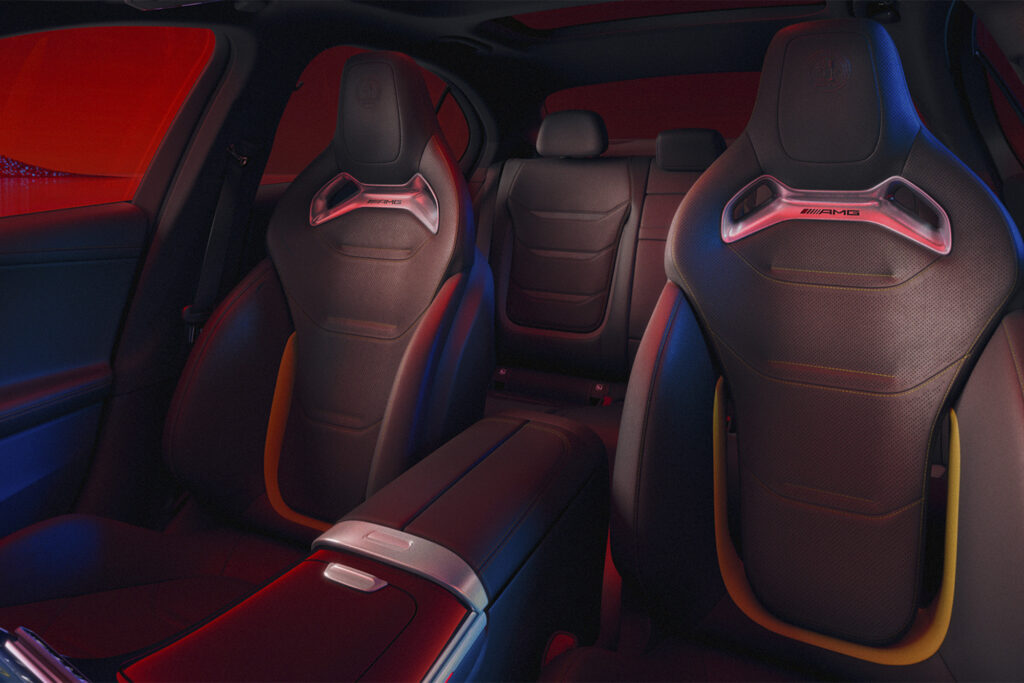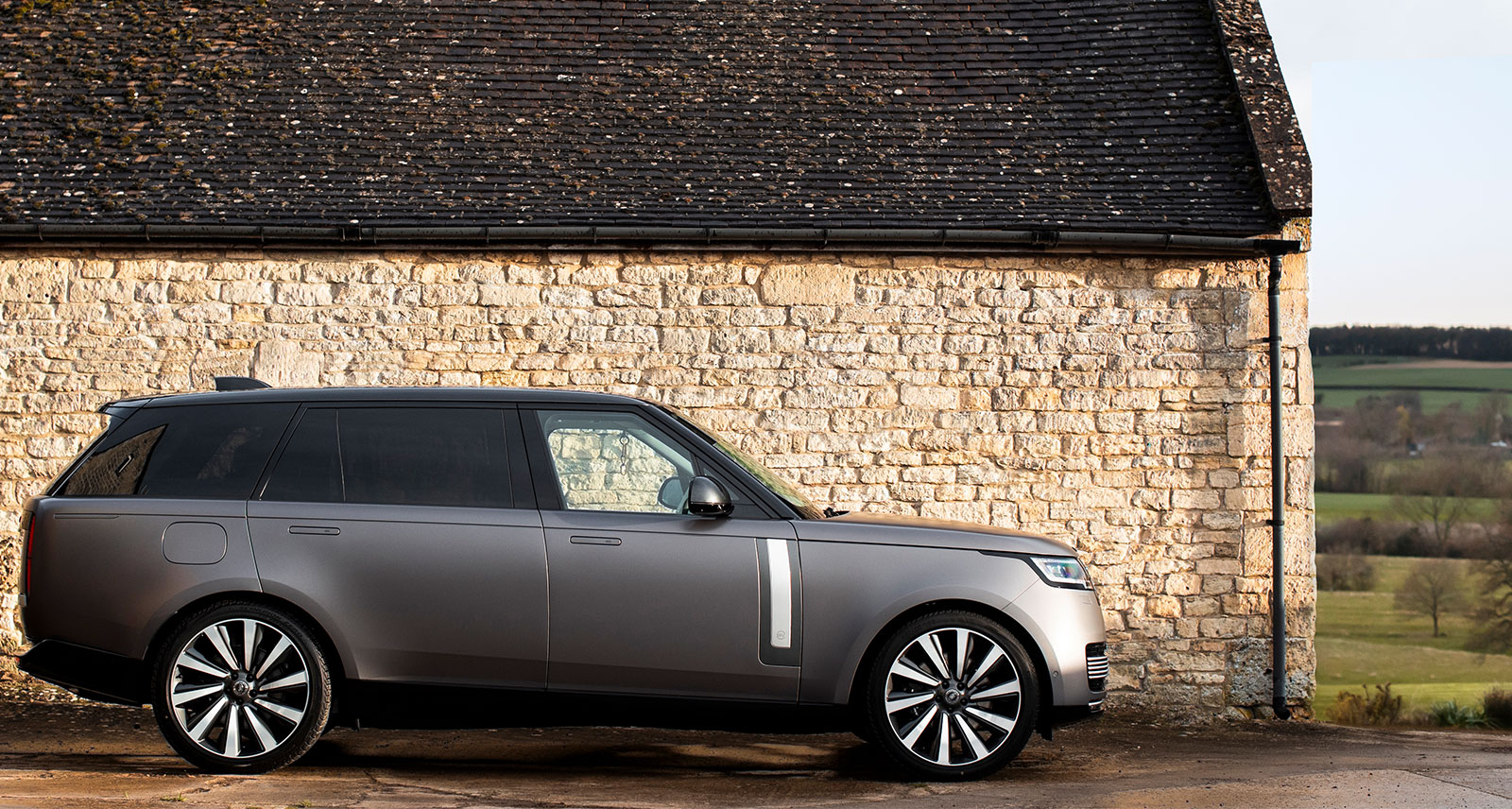Art & Science: How Mercedes-AMG Pushes Formula 1 Tech Into the Street
SHARP & Mercedes-AMG
In the automotive world, you’ll often come across the superlative “it’s a road-legal race car,” or something along those lines. Yes, brands like to hang their hat on the performance aspects of their cars, touting how the vehicle is tested on one famed racetrack or another. That said, few brands have the same true race pedigree as Mercedes-Benz.
You see, since 2010 Mercedes-Benz has been back as the Mercedes-AMG Petronas Formula One team, and is one of only a few companies whose own engines are used in Formula One cars. As a point of contrast, the Aston Martin F1 team uses engines supplied by Mercedes-Benz even though it’s an Aston Martin race team. With this many years under its belt, and a total of eight Constructors’ Championship and seven Drivers’ Championship wins since forming under the current banner, the German automotive powerhouse has an unrivaled archive of performance knowledge and R&D to pull from when it develops its latest road-going coupes, sedans, and SUVs.
After all, racing in F1 isn’t all about winning titles and the glory that comes with it. It’s not just about getting the Mercedes-Benz name in front of legions of motorsport fans either. With a factory racing team, one of the main goals is to develop technologies that can (in one form or another) trickle down into its production lines. It’s not something that’s always at the forefront of communication, and yet this crossover is at the core of most new model development in some form or fashion.

Starting with the most obvious, the Mercedes-AMG internal combustion engines found throughout the performance-tuned AMG model range all rely heavily on Formula One lessons. In the case of its latest AMG SL 63 4MATIC+ Roadster, the twin-turbocharged 4.0-litre V8 engine at its heart is a high-tech high-torque powerhouse that delivers a whopping 577 horsepower. There’s no hybrid/electric assist here — it’s all motor, and a motor that’s been built, tested, and tuned by the performance gang at AMG that also has fingers in the brand’s racing efforts. New tech has gone into place to help reduce engine friction and spin up to its redline in a hurry, allowing its driver to fire through its SPEEDSHIFT MCT 9-speed gearbox in a hurry.
Of course, with the modern advancements of Formula One that have occurred since the adoption of the Kinetic Energy Recovery System in 2009, and now a slightly different form of hybrid/energy recovery unit, the advancements in power units used in racing have further applications in the real world. In essence, the energy recovery systems operate similarly to how hybrid and EV regenerative braking systems work in road cars, and Mercedes-AMG has spent a fair bit of time looking at the efficiencies of these systems in racing and thinking about how to adapt them to road-going models.
Beyond that, there’s some direct Formula One technology that has trickled its way into the powertrain of the Mercedes-AMG C 63 SE PERFORMANCE as well. The simple fact that its turbocharged 2.0-litre four-cylinder engine can deliver 671 horsepower and 752 lb-ft of torque is an impressive feat all on its own, but it’s the technology behind its turbocharger that comes courtesy of the legendary Lewis Hamilton’s race car.

A standard turbocharger uses the flow of exhaust gasses to spool up and create air pressure on the intake to in turn develop more power, but this conventional method is prone to lag; at idle, there’s little exhaust flow and thus little assist or boost. The F1 trick here is the incorporation of a small electric motor, used to speed up the turbocharger vanes at low engine revs, making for big power as soon as your foot hits the pedal. It’s a brilliant (and rather simple) fix to an age-old problem, and one that may not have been solved if it weren’t for the world of motorsport.
When one thinks of motorsport across the board, and the engineering behind it, it’s unsurprising that most think of engines, suspension, and braking as the core development areas. It’s a logical outlook, as acceleration, cornering, and stopping really are the pillars of going fast around a racetrack. In the case of Formula One and the blistering speeds its cars achieve, aerodynamics are arguably more important than anything else. Whether it’s improving airflow for cooling the car’s engine and brakes or the creation of downforce needed to keep these race cars stuck to the track, aerodynamics can make or break a race car.
Similarly, in the EV space specifically, aerodynamic efficiency is hugely important, as it can play a significant factor on the overall range of a vehicle. In the case of the AMG EQS, its exterior form has been sculpted to reduce overall drag — it carries a drag coefficient of 0.23, in case you wondered — and a few Formula One-derived tweaks found their way into its design. In particular, the air curtains in the car’s front fascia help concentrate airflow ahead of the front wheels at high speeds. This in turn aerodynamically shields the front wheels and tangibly reduces drag on the front of the car, helping improve overall range.

Even the wheels across much of the Mercedes-AMG EQ range have motorsport roots, if you look closely. Going back to our comment about cooling, any performance car needs a good braking system, but even the best braking system in the world can be crippled by heat. While vehicles fitted with internal combustion engines typically have noses and bumpers filled with airflow passages to handle these cooling requirements, EVs often go the route of a smoothed nose for the reasons we just mentioned. Thus, the alternative method of cooling relies on wheel design — the particular forms of fins and the like in wheel spokes work wonders for drawing in cool air or pushing out heat. Formula One uses a form of wheel cover to accomplish this, whereas the EQE, EQS, and others use similar design tactics to accomplish this same goal.
While other automotive brands spend their time cosplaying as street-bound race cars, Mercedes-Benz is one of the only automakers in the game that has a genuine racing spirit. It might not always be evident when looking at its high design exteriors and luxuriously appointed passenger cabins, but under all that sheen is a racing heritage like no other.
Learn more about Mercedes-AMG here.










